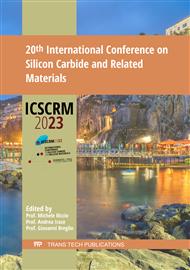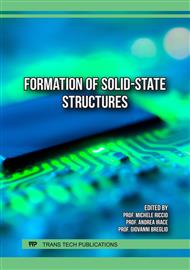p.1
p.7
p.13
p.21
p.29
p.35
p.41
p.47
Low Resistivity Aluminum Doped Layers Formed Using High Dose High Temperature Implants and Laser Annealing
Abstract:
This paper demonstrates for the first time a new annealing scheme to form p-type junctions in SiC by high temperature ion implantation followed by laser annealing without the use of a protective carbon capping layer. This novel approach leverages higher substrate temperatures during implant to minimize implant-induced defects during ion implantation, which enables the use of reduced thermal budget laser annealing for dopant activation. Laser annealing enables higher surface temperatures in the implanted layer than conventional annealing using a high temperature furnace. The shorter thermal budget results in higher dopant activation while minimizing, the formation of extended defects observed during high thermal budget furnace annealing, which can lead to undesirable degradation in device performance. By using laser annealing with no carbon capping layer, the sheet resistance of the implanted layers is reduced up to 6 times with respect to the conventional process (using a furnace anneal and carbon capping layers).
Info:
Periodical:
Pages:
21-28
Citation:
Online since:
August 2024
Permissions:
Share:
Citation:



